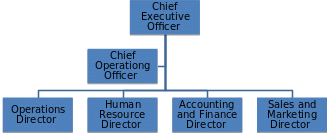Introduction
Human resource management refers to identifying, recruiting, training, and developing relevant personnel into the organization. Employees are the most valuable and delicate resource in an organizations. Therefore, every organization should focus on ensuring favorable working environment that maximizes employees’ productivity (Prince, 2011). In order to achieve this objective, every organization has a human resource division headed by a human resource manager (Batem-Bateman, & Snell, 2013). There are various functions within human resource departments including identification and filling of job vacancies through recruitment and selections, job orientation, appraisal, and training, compensations and rewards, resolving of disputes, and linking the employees to the management amongst others. These functions revolve around ensuring favorable environment for employees.
The following discussion attempts to provide an in-depth understanding of human resource management based on Goodwill Co. Ltd. (The Company I work for currently). The discussion is divided into two activities: A and B.
Activity A
According to Batem-Bateman and Snell (2013), organizations have varied structures. Whereas some organizations have integrated structures composed of different units, there are those organizations that have integrated structures, which entail putting together all the units for easier work coordination. Organization structure influences the activities of the firm, human resource inclusive. Depending on the type of the structure, an organization may experience efficiency or challenges in fulfilling some of its core functions.
Differential organizational structure distributes human resource functions hence through specialization and division of labor. Integrated organization on the other hand has most of the functions coordinated together. Batem-Bateman and Snell (2013) define authority as legitimate right for an individual to make constructive decisions towards the overall mission and vision of the organization. Lastly, Batem-Bateman and Snell (2013) define authority as defines span of control as area within which an individual is able to exercise his or her authority. These aspects affect the effectiveness of an organization in respect to goal, mission, and vision attainment given that they influence not only the operations but also the activities involved (Prince, 2011).
Goodwill Co. Ltd has the functional structure where the organization is divided into departments. The departments include operations, human resource, accounting and finance, and sales and marketing departments. Each of these departments has a departmental manager who ensures that all the activities are up-to-date. The following chart provides an illustration of the Goodwill Co. Ltd organizational structure. The organization is managed by the CEO who is assisted by the COO. All the departmental directors report directly to the COO, who is in-charge of the firm’s operations.

The above functional organization structure has enhanced specialization, division of labor, and delegation that make Goodwill Co. Ltd more effective. Through specialization, division of labor and delegation, there is effective development of the subordinate in addition to creating room for invention and innovation.
Activity B
Goodwill Co. Ltd has human resource department under the leadership of a human resource director. The human director is very dedicated to ensuring that the organization maximizes the potentiality of the employees. Nonetheless, there are specialists involved in dealing with other aspects of human resource such as benefits and compensations (Prince, 2011). The human resource director like other directors has managers in charge of various activities such as recruitment, selection, training, development, appraisals, and employee remunerations. Nevertheless, Batem-Bateman, and Snell (2013) confirm that changes in labor force are not likely to affect the procedures of the human resource management. This is because the HRM has specific roles and practices that are carried out irrespective of the persons within the labor force (Batem-Bateman, & Snell, 2013). The HRM only deals with the employees of the organizations in collective basis and not individual basis unless there are pressing needs to be addressed individually.
The relationships between workers and management have so far led to formation of labor unions. Labor unions are aimed at assisting employees into engaging management in collective bargaining for purposes of ensuring that the working environment is favorable (Prince, 2011). Labor unions are formed to enhance collective bargaining in respect to both employee benefits and working conditions (Batem-Bateman, & Snell, 2013). There are scenarios when individual bargaining may not only be involving but also fruitless hence the need for labor unions for purposes of collective bargaining.
The HRM of Goodwill Co. Ltd supports the overall vision and mission of the firm. Attaining the overall mission and vision of the firm would require efficient and effective production unit that is made both human and physical resources (Batem-Bateman, & Snell, 2013). However, without human resources it would be difficult to run the available machines. In this perspective therefore, the human resource management department will ensure that all the employees have favorable working conditions thereby attaining the overall mission of the organization (Prince, 2011). Through favorable working conditions including the environment and the benefits, workers are likely to put in their best in order to achieve set goals and objectives (Batem-Bateman, & Snell, 2013). The set goals and objectives within organizations are usually aligned to the overall mission and vision of the firm. Hence, human resource management is far much involved in ensuring that the overall objective of the firm is obtained.
Conclusion
From the above discussions, there is no doubt that human resource department is a vital unit. Through human resource managements, organizations are able to obtain highly qualified and experienced employees to fill available vacancies and form part of the work force. The work force in organizations is influential in ensuring that target goals and objectives, which correlate to the overall mission and vision, are effectively and efficiently attained. Therefore, human resource management is an important function within organizations.
References
Batem-Bateman, T. S., & Snell, S. A. (2013). Management: Leading and Collaborating In A Competitive World(10th ed.). New York, NY: Mcgraw-Hill.
Prince, A. (2011). Human resource management. Clifton Park, NY: Cengage Learning Publishers.